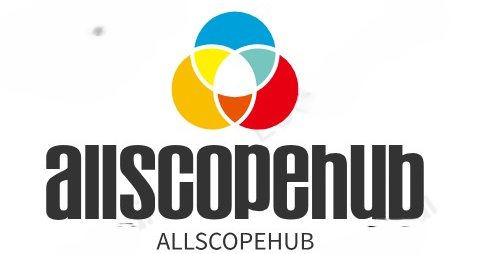Here’s Why It’s More Important Than You Think
Even in our world of instant messages and cloud storage, how to address an envelope still matters—a lot. You might think snail mail is old-school, but let’s be real: physical mail isn’t going anywhere in the business world anytime soon. If you’re sending out legal papers, client thank-you cards, job applications, or contracts, then you’re also sending a message about your professionalism. And that message can easily get lost—or worse, trashed—if the envelope isn’t done right.
How to address an envelope might sound like something you learned back in elementary school, but in today’s business world, it’s a soft skill that reflects hard-earned professionalism. Skip it, and you risk looking sloppy. Master it, and you come off polished and credible.
Why Knowing How to Address an Envelope Still Matters
First impressions matter. And guess what—your envelope is often the first thing someone sees.
Sure, you can send an email. But physical mail shows care. It stands out in a cluttered inbox-less world and proves you’re serious.
Whether you’re applying for a job, sending a proposal, or mailing an invoice, how that envelope looks speaks before your letter does.
Professionals still notice details like alignment, spelling, and format. Small errors can signal a lack of attention to detail. If the address looks messy or wrong, it might even go unopened. It’s like showing up to a meeting in wrinkled clothes. Not a good look.
The Right Way to Address a Business Envelope
So, let’s walk through the essentials. Here’s what you need to include and where it all goes:
Front of the Envelope:
- Recipient’s Name (include titles like Mr., Ms., Dr.)
- Company Name
- Street Address
- City, State, ZIP Code
All of this should be neatly typed or written in easy-to-read print (no cursive, please). Avoid abbreviations unless they’re part of the company name. Use proper spacing and align the address in the center of the envelope.
Return Address:
Put this in the top left corner of the envelope. Include your full Name, company (if relevant), and return address. This is crucial in case the mail can’t be delivered.
Need more visual guidance? The entrepreneur has a great guide on how to properly address an envelope that breaks it down clearly and with examples.
Common Mistakes You Need to Avoid
Let’s go over a few errors that people still make—and how to dodge them:
- Misspelling the recipient’s Name. Double-check it. Always.
- Forgetting the title or position. Address them as Mr., Ms., or Dr., or include their professional title.
- Wrong ZIP code. It happens more than you think. Use a ZIP code lookup if unsure.
- Poor handwriting. If it’s hard to read, it might never get there.
- Skipping the return address. If it’s undeliverable, it’s lost forever without one.
Want a deeper breakdown? Indeed, it provides a fantastic overview of how to write an envelope with layout suggestions and professional tips.
When to Use Envelopes in Business Today
You might be wondering—does anyone actually send paper mail anymore? Short answer: yes. And not just for legal stuff.
Here are some common scenarios where getting the envelope right still matters:
- Job applications: If you’re mailing a cover letter or résumé.
- Client thank-you notes: Adds a personal, memorable touch.
- Invoices or payment reminders: Shows you’re professional and organized.
- Formal invitations: For events, conferences, or fundraisers.
Let’s not forget holiday cards. They’re small gestures that go a long way in client retention—and yes, they still come in envelopes.
Should You Use Printed Labels or Handwritten?
It depends on the context. Printed labels are neat, easy to read, and perfect for large batches like invitations or invoices. They save time and look uniform.
But when you’re sending a personal thank-you or a note to a client or colleague? Go handwritten. It shows extra care. Just make sure your writing is clean and easy to read.
The rule of thumb:
- Printed for bulk, formal, or internal mail
- Handwritten for personal, high-touch, or client-facing mail
Business Etiquette and Mail Presentation Go Hand-in-Hand
It’s not just about what you send—it’s also about how you send it. A crumpled, misaligned envelope makes a bad impression even if your content is top-notch.
You wouldn’t wear flip-flops to a business meeting. Then don’t send a sloppy envelope, either.
Here are some quick presentation tips:
- Use good-quality envelopes. Cheap ones can tear or wrinkle.
- Avoid flashy colors. Keep it simple and professional—white or ivory is a safe bet.
- Don’t overstuff. If it doesn’t fit, use a larger envelope.
- Seal properly. Don’t use tape unless necessary—it looks unprofessional.
Tips for International Business Mail
If you’re mailing overseas, the rules change slightly.
You’ll need to include:
- Country name in ALL CAPS
- Possibly use an international format (with postal codes specific to that country)
- Consider customs forms for packages
And keep in mind: international mail can take longer, so allow for time buffers when planning communications.
Envelope Addressing for Remote or Hybrid Teams
In 2025, many teams will still be hybrid or fully remote. That means people are spread out—literally. Mailing something physical? You’ll often need to double-check addresses with HR or directly with your colleague.
This adds another layer to why properly addressing an envelope matters—it helps your note, card, or document find the right person without delay.
Why the Small Details Make a Big Difference
Let’s be honest. Nobody is going to give you a raise just because you addressed an envelope correctly. But people do notice when you get it wrong. It’s the small stuff that adds up to create a reputation.
When you take time to do it right, you show that details matter to you—and in business, that kind of consistency and care always pays off.
Conclusion: Why We Still Care About the Envelope
We’re in a world flooded with instant messages and emails, but at the end of the day, physical mail still holds value. That’s why how to address an envelope isn’t just an old habit—it’s still a signal of professionalism and respect.
Whether it’s a job application, a client thank-you note, or an important invoice, sending mail the right way still matters in 2025—and probably will for years to come.
We believe in sweating the small stuff because those details shape the bigger picture. If you’re serious about building professional relationships and showing up at your best, mastering the basics—like addressing an envelope—is a solid place to start.
Ready to Put This Into Practice?
Start with your next mailout. Take five extra seconds to check the details, format your envelope like a pro, and let that first impression work in your favor. Trust us—it’s worth it.



